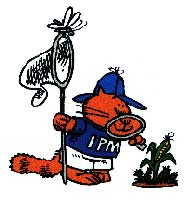 Mark your calendar now for the 2001 IPM Training
School! Scheduled for March 21, the meeting will be
held at the UK Research Center in Princeton.
Registration will open at 8:30 AM with the meeting
starting at 9:00AM.and ending at 3:30 PM.
Mark your calendar now for the 2001 IPM Training
School! Scheduled for March 21, the meeting will be
held at the UK Research Center in Princeton.
Registration will open at 8:30 AM with the meeting
starting at 9:00AM.and ending at 3:30 PM.
As a result of the changes to KRS217B, the license renewals were late being mailed this year. In December, we mailed the Dealer registration forms to all companies currently licensed. We included in the registration packet a copy of the new law. It is very important that you read and understand the new definition of a dealer. A dealer as defined in KRS 217B.040(26) is any person that engages in the storage of bulk fertilizer or restricted use pesticide for the purpose of redistribution or direct resale, or engages in the business of applying pesticides to the lands of another. This does not include manufacturers of restricted use pesticides or fertilizers who distribute their product to dealers. You must complete this registration form and remit the proper fees to the Division of Pesticides as soon as possible. We can not issue a license until the registration form has been processed.
Beginning January 8, 2001 we will be sending out the license renewal forms. There will be a change in the renewal packet this year. You will need to complete and return these as soon as possible. We hope to be able to send out the licenses within two weeks of receiving your renewal forms.
If you or one of your employees is not certified we will not be able to renew that license. We will have a letter in the packet that explains the reason that a license can not be renewed. The major reason a license will not be renewable is lack of certification. Anyone that is not certified must pass the certification exam before they can be licensed. This is another major change in KRS 217B. The schedule and location of test centers is on the Department's web page at http://www.kyagr.com. You may also contact this office by phone at (502)564-7274 for a copy of the testing schedule.
This is a new process for the division. We realize
that there is a lot of confusion regarding these
changes. We have staff available in the office to
answer any questions that you may have. Please let
us know if we can assist you with this process.
 Mark your calendar now for the 2001 IPM Training
School! Scheduled for March 21, the meeting will be
held at the UK Research Center in Princeton.
Registration will open at 8:30 AM with the meeting
starting at 9:00AM.and ending at 3:30 PM.
Mark your calendar now for the 2001 IPM Training
School! Scheduled for March 21, the meeting will be
held at the UK Research Center in Princeton.
Registration will open at 8:30 AM with the meeting
starting at 9:00AM.and ending at 3:30 PM.
The program will feature a session on "Advanced Scouting" for those who have attended previous IPM Training Schools and are experienced scouts. An "Introduction to Scouting" session will be offered for those who have never scouted a field . The "Introduction to Scouting" session will teach site selection and the basic techniques for scouting corn, soybeans, alfalfa and small grains.
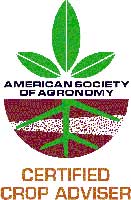 Pest identification will be a major part of the
training school. Weed, insect and disease problems
of corn, soybeans, small grains and alfalfa will be
covered. An update of pest problems in Kentucky
will also be discussed.
Pest identification will be a major part of the
training school. Weed, insect and disease problems
of corn, soybeans, small grains and alfalfa will be
covered. An update of pest problems in Kentucky
will also be discussed.
Advance registration is not needed and the meeting
is open to the public free of charge.
The program
has applied for 5.5 CEU's for Certified Crop
Advisors. For additional information contact Patty
Lucas at 270 - 365-7541 extension 218 or
plucas@ca.uky.edu.


Having healthy, disease-free transplants is an important first step to controlling root diseases in the field in the 2001 crop. Why? Because setting diseased transplants spreads diseases to rotated fields. Pythium root rot, soreshin, black shank, black root rot, and Fusarium wilt, are commonly moved this way. Also, diseased transplants are predisposed to field pathogens awaiting them. Below are some data from a recent study to illustrate both points. In particular, note that the difference in disease development in the rotated site between healthy and diseased lots of transplants is an example of "spread". Comparisons in disease development between these same two transplant lots in the continuous tobacco illustrates the predisposition issue. With this last comparison, be especially careful to note the large increase in disease associated with the "diseased" transplants on the 60 and 90 days ratings as compared with the 30 day ratings. Folks, these data should be especially of interest to those planting float plants into non- rotated sites!
| Transplant Lot* | Site | % dead plants** |
||
| 30 days | 60 days | 90 days | ||
| Healthy | Rotated | 0 | 0 | 0 |
| Diseased | Rotated | 11 | 14 | 14 |
| Healthy | Continuous | 10 | 17 | 26 |
| Diseased | Continuous | 23 | 52 | 83 |
| LSD (P=0.05) | 5 | 9 | 10 | |
* The variety was Tennessee 90 which has very high resistance to black root rot and medium resistance to black shank, but is susceptible to Fusarium Wilt. The "disesed" transplant lots were inoculated 9 days prior to transplanting with a mixture of Pythium, Rhizoctonia, and Fusarium isolates.
** The dead plants in the rotated plots had soreshin or Fusarium wilt, while those in the continuous tobacco had black shank, Fusarium wilt, and soreshin in a complex.
______________________________________________
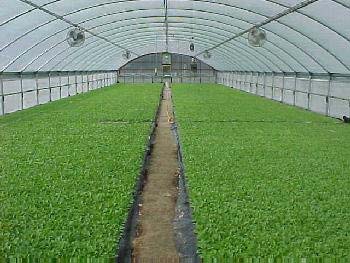 It is anticipated that the majority (about 80%) of
transplants used to set Kentucky's tobacco fields this
year will be produced in the float system, either in a
greenhouse or outdoors. Although the float system
offers many advantages to tobacco producers, it
unfortunately also provides high potential for
infectious diseases development, especially root
diseases.
It is anticipated that the majority (about 80%) of
transplants used to set Kentucky's tobacco fields this
year will be produced in the float system, either in a
greenhouse or outdoors. Although the float system
offers many advantages to tobacco producers, it
unfortunately also provides high potential for
infectious diseases development, especially root
diseases.
The key to root disease control in the float systems centers around avoiding contamination with the pathogens. A diligent sanitation program is essential! I urge growers to take active measures to avoid introduction of disease-causing organisms into their float systems. Realize that the pathogenic microbes of concern will be associated with anything that has come in contact with soil or another crop. The fewer items that are reused, the lower the risk potential for diseases. Any items that are reused should be sanitized, with chemicals, fumigants, or heat to reduce (but not eliminate) the microbes involved. Everything entering or contacting the operation should be pathogen-free: this includes the trays, the water, the media, equipment, tools, and workers. That means either new trays must be used or reused trays must be properly washed and sanitized.
It is very important that growers not become over- confident and reduce their sanitation measures now that one chemical tool (Terrazole/Terramaster) is legally available for use in the float system. This chemical will be very important in the control of only one pathogen - Pythium. Infectious diseases of the root and stem have been on the increase in the past few years, in part because of the widespread reuse of materials in the float system.
Growers have very few legal options for disease control in the float system. The need for regular fungicide applications to the water, soil and foliage is very high, but few chemical companies are willing to label their chemicals for these systems due to fungicide-resistance concerns. Consequently, growing transplants in the float system requires a much greater level of supervision and management than is necessary with traditional plant beds. Especially critical is keeping the disease-causing organisms out of the system - sanitation.


Stalk rot diseases were more common last year than in any time since I joined the UK Extension Service in 1990. A brief review of factors that affect stalk rots follows.
Tillage. Dr. Pat Lipps and colleagues of The Ohio State University conducted seven years of study and found no effect of tillage in four of those years. In three years, they found reduced stalk rot under no- till as compared to plowed ground. Limited studies in Kentucky are consistent with the OSU work. It is thought that the residue mulch may reduce stalk rots by reducing plant stress during temporary drought periods.
Rotation. In the OSU study, the researchers surprisingly saw no benefit from a corn-soybean rotation compared to continuous corn.
Planting date. Studies in the Midwest have provided conflicting results on the effect of planting date. It is likely that planting date per se does not influence stalk rots; what matters is the timing periods of good growing conditions and periods of plant stress in the overall growth cycle of the crop. One year, late-planted fields may get hit the worst, while another year, the early-planted fields may show the most stalk rot.
Plant population. High plant populations are often associated with stalk rots. The self-shading that occurs when plants are crowded reduces photosynthesis. This causes plants to use carbohydrates in the stalk to fill the ear, allowing stalk rot fungi to invade.
Fertility. Excess nitrogen in relation to potash can allow stalk rots to flourish, although this is not likely a problem in Kentucky soils. A nitrogen deficiency after mid-season can also encourage stalk rots, by imposing stress during grain fill.
Weather. The scientific literature indicates that temporary drought at silking, can be important in setting plants up for stalk rots. Extended periods of cloudy weather during grain fill can also be important, especially if the yield potential is high, since the plant will make up for the deficiency in photosynthesis by drawing on stalk reserves to fill the grain.
Leaf diseases. Diseased leaf tissue is not effective at photosynthesis, so again, if the plant is trying to fill a big ear, it may draw on stalk reserves and thus weaken the stalk, setting it up for stalk rot infections. In 2000, common rust occurred earlier and more severely than normal. Although overall disease levels were generally low, the appearance of that disease several weeks before silking could have been an important factor. This is especially true since rust disease can substantially upset the physiology of diseased leaves. Gray leaf spot was not a major factor in the fields I examined with severe stalk rot, although it certainly can be important in fields with moderate to severe disease levels.
Insects. Stalk borers can provide an avenue for infection by stalk rot fungi. However, the great majority of the infections I observed in the field and in the Diagnostic Lab last year were not associated with insect injury. While insects can enhance stalk rot diseases, I think other factors were at work in most fields.
Suggestions for 2001
Consider stalk strength scores. Hybrids differ in
their stalk strength. Even when the internal pith of
the stalk is infected, a stronger stalk will hold up
better in a wind. Look carefully at stalk strength
scores when choosing a hybrid.
. Many agricultural professionals I've consulted with believe that plant populations have risen significantly in the last five years. One highly experienced agronomist believes that many producers had plant populations around two thousand plants above what was needed for optimal yields. Adding to these trends is Dr. Don White's (University of Illinois) observation of very high quality in the 1999 seed crop, which may have resulted in unexpectedly higher plant populations than normal. Consider your plant populations carefully for the 2001 crop.
Always check lodging potential as harvest approaches. A simple way to do this is to walk through the field and, keeping your hands at chest height, push stalks 18-24inches from vertical. If 10- 15% of the stalks lodge, schedule the field for early harvest before a strong wind results in severe lodging.

 This time of year always brings questions about
how much Barley Yellow Dwarf (BYD) to expect in
this year's wheat crop. Additionally, our curiosity
can only be increased by the warm weather spell we
are entering. However, this year, unlike the past
four, we at least have had a "normal" winter.
This time of year always brings questions about
how much Barley Yellow Dwarf (BYD) to expect in
this year's wheat crop. Additionally, our curiosity
can only be increased by the warm weather spell we
are entering. However, this year, unlike the past
four, we at least have had a "normal" winter.
A comparison of the 1999-2000 vs. 2000-2001 seasons might show us how a "normal" winter (this year) compares to the very warm winters (e.g. last year) we have been having. What I would like to show you is the relative change in risk associated with fall and winter temperatures and the interaction between temperature and planting date.
Remember, aphids cannot regulate their own body temperature. The temperature of their surroundings dictates what their body temperature will be. Although they will not die until it becomes very cold, they do not function, that is move, feed or reproduce, to any great extent when the temperatures are very much below 48-50oF. We are going to look at our situation now, compared to last season, based on temperatures above 50oF. In my research plots at Princeton, KY during the 1999-2000 season BYD ran between 12 and 50 % infected plants.
First, let me just remind you how a Degree Day (DD) is calculated. In this example we are assuming that nothing happens when the temperature is below 50oF, so this is called a "Base 50" DD. So we take the daily Maximum and Minimum temperatures, average them, then subtract 50. The remainder is the number of DD's for that day (the number can not be less than 0). With each passing day we add the DD together to get a total (sum) over time. The higher the temperature and the longer the time with temperatures above 50oF, the more time that aphids can reproduce, move around, feed and spread Barley Yellow Dwarf Virus (BYDV).
 *In Figure 1., I have illustrated the accumulation of
DDs from Oct. 15th through Jan. 28 of the current
and the previous season. This would simulate
exposure of wheat that emerged on or about Oct.
15th in Princeton, so it would have been planted
about a week or ten days earlier, say Oct. 5 8th.
For comparison, Princeton is at Lat/Lon- N: 37º 06'
01" / W: 087º 51' 13" and an altitude of 550ft. The
Hessian Fly free date is Oct. 15th.
*In Figure 1., I have illustrated the accumulation of
DDs from Oct. 15th through Jan. 28 of the current
and the previous season. This would simulate
exposure of wheat that emerged on or about Oct.
15th in Princeton, so it would have been planted
about a week or ten days earlier, say Oct. 5 8th.
For comparison, Princeton is at Lat/Lon- N: 37º 06'
01" / W: 087º 51' 13" and an altitude of 550ft. The
Hessian Fly free date is Oct. 15th.
You will notice that in both seasons the first few days were about the same. After about Oct. 20th, the 2000 fall was warmer than that of 1999. You can see by the steepness of the line that the DD accumulation occurred at a much greater rate between Oct. 20 and Nov. 7 in 2000 than in 1999. However, from about Nov. 7th 2000 through our current date, DD accumulation just about ceased. In the 1999-2000 season however the DD accumulation after Nov 7th 1999 just kept right on increasing through the winter. So in the current season on Jan 28, 2001 we have accumulated 379 DD. Also, the accumulation has only increased by 12 DDs (from 367 DD) since Nov. 7, 2000. In contrast on Jan. 28, 2000 we had a DD accumulation of 462. and that total had increased by 243 DD from the Nov. 7, 1999 total of 219 DD. This certainly implies that during the fall and winter of the 1999-2000 season aphids had more opportunity to remain active.
So it should be easy to see that we are at less risk for BYDV problems in 2001 than we were at this time in 2000. Fewer DD's have accumulated, and almost none over the previous 2" months.
There is still risk of BYD in the system. This is largely due to the fact that the latter portion of Oct. and early Nov. were quite warm.
Depending upon when your crop emerged, it was at greater or lesser risk.
 *Figure 2. illustrates the accumulation of DD's in the
2000-2001 seasons, depending upon when the wheat
emerged. The upper line represents DD
accumulation for a crop that emerged on Oct. 15th
while the lower line is for a crop that emerged on
Oct. 25. Certainly it is easy to see that the crop
emerging on Oct. 25 was at less risk. The earlier
crop accumulated a DD total of 379 while the later
crop only reached 234 DDs.
*Figure 2. illustrates the accumulation of DD's in the
2000-2001 seasons, depending upon when the wheat
emerged. The upper line represents DD
accumulation for a crop that emerged on Oct. 15th
while the lower line is for a crop that emerged on
Oct. 25. Certainly it is easy to see that the crop
emerging on Oct. 25 was at less risk. The earlier
crop accumulated a DD total of 379 while the later
crop only reached 234 DDs.
Neither of theses examples is absolute. There are many other factors that affect BYDV movement, reproduction and expression as BYD. This is especially true if your crop emerged earlier than the dates illustrated. We may however, have been aided by last summer's drought in the southeast. The drought should have reduced the number of aphids that survived the summer and stressed the plants that serve as alternate hosts for BYDV. While I cannot say for certain what will happen this year, it looks as if we should have less BYDV than we did last year. Certainly we know that when we have more "normal" cold winter temperatures --
Aphids:
BYDV:
For more information about wheat pests, visit "Insect Management Recommendations".
New restrictions on pesticide use as a result of the Food Quality Protection Act of 1996 , development of pesticide resistance in some areas, and the introduction of some new pesticide products for codling moth are changing the strategies we use to manage this key pest of apples in the Midwest. Similarly, the loss of insecticides for San Jose scale crawler control during the growing season and the introduction of a new class of insecticide will alter the way we control San Jose scale.
The FQPA has seriously altered array of insecticides that can be used in fruit production, particularly apple production. Within the last two years we have seen new restrictions placed on azinphos-methyl (Guthion, Sniper), chlorpryifos (Lorsban), and methyl parathion (Penncap-M). Guthion use has been reduced from 12lb/a/season to 9lb/a/season and preharvest intervals increased to 14 to 21 days. Lorsban has been restricted to prebloom use only and Penncap-M has had the fruit uses withdrawn altogether. These three compounds are in the same insecticide class, they are organophosphates. They have had widespread use in the Midwest as broad- spectrum insecticides for control of several important apple pests for several decades. With new restrictions on the use of these insecticides, we need to look at what the implications are for insect management, particularly codling moth. Use of another organophosphate insecticide, phosmet (Imidan), has not been restricted by FQPA, yet.
Fenpropathrin (Danitol) is a new insecticide listed in the 2001 Commercial Tree Fruit Spray Guide for use on apples. This is a pyrethroid insecticide and is similar to Ambush, Pounce and Asana. Generally, pyrethroid use after petal fall is discouraged in Kentucky because they are toxic to predatory mites that feed on spider mites and they have long residual activity. Like other pyrethroid insecticides, Danitol is toxic to predatory mites. But it is also toxic to spider mites and is less likely to lead to spider mite outbreaks than other pyrethroids. Before incorporating any new insecticide into an apple spray program, we need to make sure that it will not upset management of mites.
Another new insecticide listed in the 2001 spray guide is methoxyfenozide (Intrepid). Like Confirm, which has recently been included in the spray guide, Intrepid mimics the action of an insect growth regulator and causes lepidopterous insects, caterpillars, to prematurely molt. They stop feeding within a day of ingesting the chemical and die within several days. Unlike other insecticides mentioned above, Intrepid and Confirm are very selective and virtually nontoxic to other orders of insects. Use of these products to control codling moth, obliquebanded leafroller, green fruitworm and other leafrollers should not affect spider mite control programs.
One important consideration with these insect growth regulators is that the timing of application is very different than the other codling moth insecticides. Generally, codling moth insecticides have been applied 250 day-degrees after biofix. Biofix for the codling moth is the starting date of the first sustained flight of male moths captured in pheromone traps. Generally, this is when the fifth moth has been captured in the trap. A few moths often emerge very early in the spring ahead of the rest. Using the fifth moth as the biofix better represents when the majority of the codling moths begin to emerge. This usually occurs just after petal fall. Intrepid and Confirm need to be applied earlier in the season than the older materials. According to the labels, these need to be applied 150 to 250 day- degrees after biofix. Entomologists in the Midwest agree that the early part of this interval may be more effective than waiting until 250 day degrees. With each of these insecticides, a two applications are needed for each codling moth generation, the second 10 to 14 days after the first.
Avaunt 30DG received EPA approval after the 2001 spray guide went to the printer. As a result it is not included in the guide this year. It is used against a wide range of insect pests including codling moth, leafrollers, plum curculio, leafhoppers, plant bugs and apple maggot. The active ingredient is indoxacarb and it belongs to a new class of insecticides, the oxydiazines. It is used at rates of 5 to 6 ounces per acre and has a restriction of 4 applications per year, only three of which can be used prior to hand thinning.
Scale Management
San Jose scale is an extremely important indirect
pest of apples, pears, peaches, and plums. It is a
sucking inject that injects a toxin into the plant as it
feeds causing localized discolorations. The presence
of reddish blemishes on fruit at harvest indicates
potentially damaging numbers on the trees. Left
uncontrolled, San Jose scale can kill the entire tree in
a couple years. If such damage is noted, inspect
trees for scale, especially one year-old wood.
Purplish-red halos on young bark are indications of
scale infestation. Often this very small insect goes
unnoticed until large populations have developed.
During the last couple of years in Kentucky, complaints about San Jose scale have been on the rise. In the past, management of San Jose scale in apples has relied on good pruning practices that permits spray penetration and thorough coverage, dormant oil applications and the use of either Penncap-M or Lorsban timed to control first generation scale crawlers. Timing of sprays is important to achieve adequate control of the crawlers. Growers in Kentucky have used two methods to determine crawler activity. The first method relied on pheromone trapping of the male scale then waiting 405 day degrees (Base 51) for crawler emergence. This method is not used much anymore. Most growers now use black sticky tape wrapped around scaffold limbs of trees with known scale infestations. The tape is attached with the sticky surface of the face up. Beginning around May 20, growers examine the tape for minute crawlers stuck to its surface. Crawlers will appear as extremely small flattened yellowish insects which can be seen with a hand lens on the tape (especially around the edges).
Management of scale is changing. Penncap-M can no longer be used on tree fruits and Lorsban cannot be used during the period of crawler activity. To replace these products, a new insecticide has been labeled for scale control on apples. Pyriproxyfen (Esteem) is a new insect growth regulator that targets scale as well as first generation codling moth, leafminers and aphids. The preferred timing of Esteem for San Jose scale control is as a delayed dormant spray, but it can also be used to control scale crawlers in late May or early June. The effectiveness of Esteem is enhanced when mixed with oil. Only two applications of Esteem are permitted per season.
Small fruits such as grapes, cane berries, strawberries and blueberries are increasingly being grown in Kentucky to supplement farm income and to provide fresh produce for Kentucky consumers and winemakers. Fruit growers, especially new growers, are frequently unaware that maintaining the health of their small fruit crops requires strategies for preventing and managing several common infectious diseases. The list below includes the common infectious diseases of small fruits that we observe in Kentucky. Growers and agents advising growers will want to take these diseases into account when making management and economic decisions for growing small fruits.
Blackberry and Raspberry Diseases
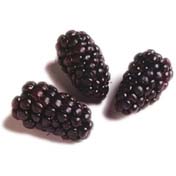
Grape diseases

Blueberry diseases
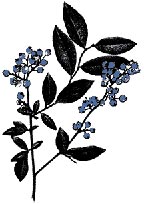
Strawberry diseases

For information on managing diseases of small fruits, refer to U.K. Cooperative Extension Publication ID-94, Kentucky Commercial Small Fruit and Grape Spray Guide 2001. Other useful references include: Compendium of Grape Diseases, Compendium of Strawberry Diseases, Compendium of Raspberry and Blackberry Diseases and Insects, Compendium of Blueberry and Cranberry Diseases, all available from: APS Press, American Phytopathological Society, 3340 Pilot Knob Road, St. Paul, MN 55121-2097.
Lee Townsend
Extension Entomologist